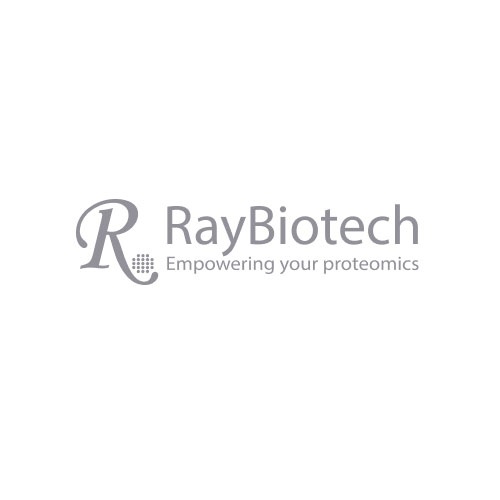Mouse NF-κB Pathway Phosphorylation Array C1
Product Description
Specifications
| Size | 2 Sample Kit, 4 Sample Kit, 8 Sample Kit |
|---|---|
| Species | Mouse |
| Quantitative/Semi-Quantitative | Semi-Quantitative |
| Number of Targets Detected | 11 |
| Compatible Sample Types | Cell Culture Supernatants, Plasma, Serum, Tissue Lysates, Cell Lysates |
| Solid Support | Membrane |
| Method Of Detection | Chemiluminescence |
| Design Principle | Sandwich-based |
| Research Area | Post-Translational Modifications, Phosphorylation, MAPK Signaling, mTOR Signaling, p53 Signaling, NFkB Signaling, PKC Signaling |
| Estimated Lead Time | 1-2 business days |
| Shipping Type | Blue ice |
| Storage | -20°C |
Risk-Free Guarantee
We offer a 100% guarantee on all ELISA kits and membrane cytokine arrays.
Learn More
Amazon Gift Cards!
$5 Amazon gift card in every kit box purchased.
| Scroll over each target protein for more information | ||||
|---|---|---|---|---|
|
ATM (P-Ser1981)
|
eIF-2a (P-Ser52)
|
HDAC2 (P-Ser394)
|
HDAC4 (P-Ser632)
|
IKB-alpha (P-Ser32)
|
|
MSK1 (P-Ser376)
|
NF-kB (P-Ser536)
|
STAT1 (P-Ser727)
|
TAK1 (P-Ser412)
|
TBK1 (P-Ser172)
|
|
ZAP70 (P-Tyr292)
|
||||
Application Notes
- Mouse NF-kB Pathway Phosphorylation Array C1 Membranes
- Blocking Buffer
- Detection Antibody Cocktail
- 1,000X HRP-Anti-Rabbit-IgG Concentrate
- 20X Wash Buffer I Concentrate
- 20X Wash Buffer II Concentrate
- 2X Cell Lysis Buffer Concentrate
- Detection Buffer C
- Detection Buffer D
- 8-Well Incubation Tray w/ Lid
- Protease Inhibitor Cocktail
- 100x Phosphatase Inhibitor Cocktail I
- Phosphatase Inhibitor Cocktail II
- Plastic Sheets
- Array Map Template
- Manual
- Pipettors, pipet tips and other common lab consumables
- Orbital shaker or oscillating rocker
- Tissue Paper, blotting paper or chromatography paper
- Adhesive tape or plastic Wrap
- Distilled or de-ionized water
- A chemiluminescent blot documentation system: CCD camera, X-ray Film and a suitable film processor, gel documentation system, or another chemiluminescent detection system capable of imaging a western blot.
- Block membranes
- Incubate with Sample
- Incubate with Detection Antibody Cocktail
- Incubate with HRP-Conjugated anti-IgG
- Incubate with Detection Buffers
- Image with chemiluminescent imaging system
- Perform densitometry and analysis
Typical Data
Figure 1 - HeLa cells were grown to 80% confluency and then serum starved overnight. Cells were either untreated (bottom panel) or treated (top panel) with TNF alpha and Calyculin A. Data shown are from a 20 second exposure using a chemiluminescence imaging system.
Note the strong signals of the Positive Control spots in the upper left and lower right corners. (See below for further details on the control spots.)
The signal intensity for each antigen-specific antibody spot is proportional to the relative concentration of the antigen in that sample. Comparison of signal intensities for individual antigen-specific antibody spots between and among array images can be used to determine relative differences in expression levels of each analyte sample-to-sample or group-to-group.

